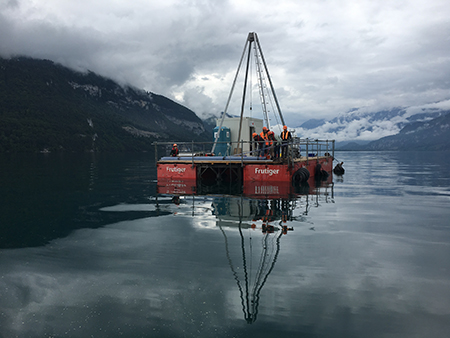Lake sediments as archive of paleoearthquakes in Switzerland

|
Earthquake can initiate subaquatic mass transport and sediment deformation structures, the deposits of which are stored in the sedimentary archive. Due to their good preservation potential and improving dating methods, these earthquake-related deposits in the sedimentary archive of lakes can extend the earthquake catalogue back to prehistorical times. The determination of frequency, epicentre and magnitude of these paleoearthquakes can be a key input for improving a probabilistic seismic hazard model, especially in areas such as Switzerland where strong earthquakes have long recurrence rates and might not be recorded in historic times. In order to better interpret the prehistorical earthquake-related sedimentary record, it remains important to understand which historical earthquakes did trigger mass transport deposits and sediment deformation structures, and which earthquakes did not trigger secondary sedimentary effects in the lake basins. The proposed project is aimed to improve our understanding of which earthquakes, or what kind of shaking, leave traces in the sediments, in order to evaluate the completeness of the sublacustrine paleoseismological record, using Lake Thun as example. The second aim of this project, directly linked to the first one, is to compare the paleoseismological record with the contemporary national seismic hazard model of Switzerland, updated in 2015. Thus, using the intensity ranges determined in the first part of this project and using the paleoseismic database of Switzerland a systematic analysis of frequencies, sources and magnitudes of possible paleoearthquakes will be compared to time series produced by the seismic hazard model of Switzerland. |
|---|---|
| SED Projektleitung | Dr. Katrina Kremer |
| Finanzierung | SNF, Marie Heim-Vögtlin programme |
| Zeitdauer | 2.2017-1.2019 |
| Stichwörter | Lake sediments, paleoseismology, sublacustrine slope failure |
| Bereich | Historical Seismicity, Paleoseismology |
| Webseite | https://tsunami.ethz.ch |